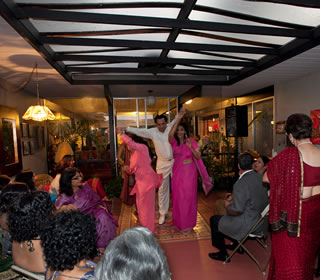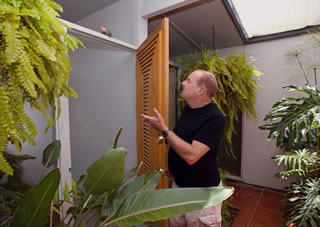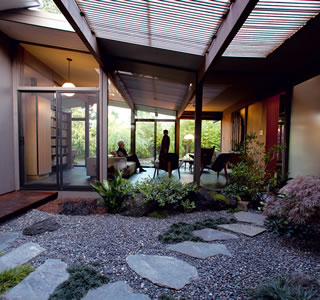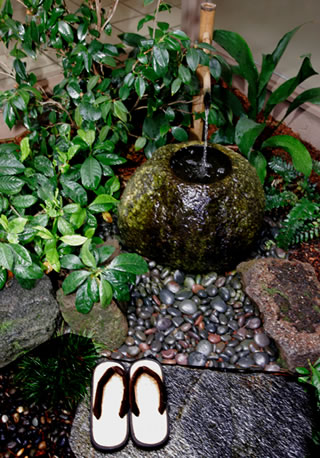Living the Atrium Life - Page 4
 |
|
|
Gopal, who is from India and still goes there often to study yoga, says she teaches “serious, classical yoga,” complete with the chants, not lightened up for Americans nor tuned into pure exercise.
“Whenever you chant,” she says, “your mind becomes calm. The chitter-chatter in the brain stops for a while.”
She arranges candles in the atrium before her evening classes begin. By the time class ends, darkness has fallen and candlelight is all that remains. “I love how at this time of year light gradually turns to dusk,” student Sue Fine says. “With the candles and incense, it’s a very encouraging atmosphere to do yoga in.”
 |
|
|
From atrium to aviary
It was a magic moment, a moment that counts. A pair of finches—tiny creatures, all motion and energy—had built themselves a home in David Winn’s atrium, hiding in the leaves of a Boston fern.
The home in San Jose’s Fairhaven neighborhood was new to Winn—newer than the fern, which he’d brought along from his former condo—and he hadn’t quite figured it out. But he worried for the finches. How would the baby birds survive?
Very carefully he moved them outside. “They came right back,” he says. “I thought, ‘Well, I’ll let them be.’ After that I didn’t try to stop them.”
For the past decade, during annual nesting season, Winn’s atrium is a virtual aviary, with as many as six pairs living among the ferns, fluttering into the sky when human visitors pass from the front door through the atrium, then returning to their nests when they pass.
Although he doesn’t join the Audubon Society on their annual bird counts, Winn has become a bit of a bird watcher—at least when the action is confined to his atrium.
“They’re fascinating to watch,” he says. “The males tend to fight each other, but not seriously. There’s a lot of bluster.”
“They find a place to build a nest,” he says of the parent birds, “carry in the material, and they fly in and out feeding the babies.”
Artistic gardens
Some of the very finest atriums, and some that add the most to their owners’ lives, are the simplest. It’s not necessary to bring in an easel and paint, or haul in sculpting chisels and stone blocks to create art in your atrium.
 |
 |
|
|
Landscaping magic is good enough.
Asian-style gardens are particularly appropriate for Eichler atriums, given the clean lines of the house and its stylistic resemblance to traditional Japanese and Chinese homes.
Barry and Rosemary Brisco used steppingstones, pebbles, a Japanese deck called an engawa, and plantings to create a peaceful, sculptural space in the west-facing atrium of their San Mateo Highlands Highlands home. The atrium is partially covered by wooden slats, to cut afternoon sun and glare.
As the entry to the home, Barry Brisco says, the atrium “sets the tone for me for the rest of the house because it’s the initial experience of entering the building.” A stone fountain, which people hear but don’t see as they enter the atrium, “adds an initial bit of mystery before you can figure it out,” he says.




